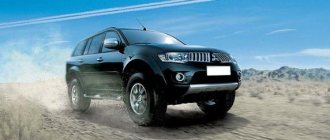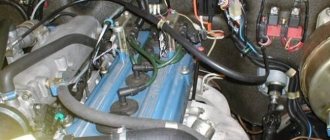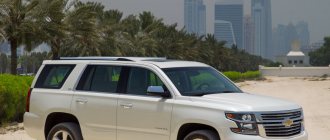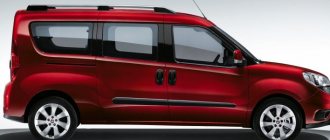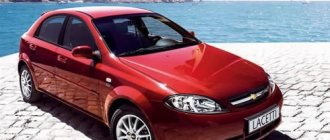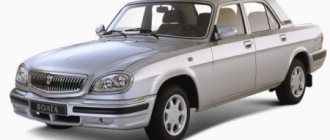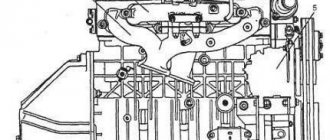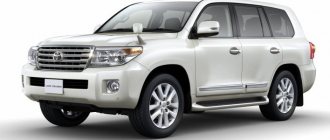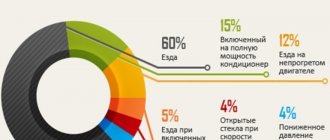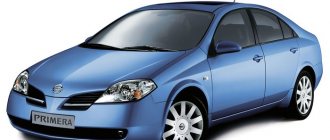Hyundai Grand Starex H1 is a popular Korean minivan. Thanks to a wide range of modifications, it is a very practical and popular car.
Photo: Hyundai Starex
The debut of the first generation model, which was also called Hyundai Starex, took place in 1996. Today, they are already producing the second generation of minivans, which were officially introduced in 2007.
Among the main design features of the new Hyundai Starex H1, it is worth noting the following: the main load-bearing element is the body, the car’s engine is located longitudinally, and the torque is transferred to the rear axle.
Two engines are available for domestic car enthusiasts: a 2.4-liter naturally aspirated gasoline engine with a power of 170 horsepower, and a 2.5-liter diesel engine with two power options - 116 and 170 horsepower. It is worth noting that at first the developers planned to make the base engine power 145 hp, but later abandoned their idea.
The engines are equipped with a 5-speed manual transmission and the same automatic transmission.
Technical data and modifications of Hyundai H1
Until 2007, the van was supplied to the market with two engine versions of 2.4 and 2.5 liters. The fuel consumption of the Hyundai Starex H1 allowed, at that time, to cover long distances without refueling. The version with an engine compartment volume of 2.4 liters was available with both all-wheel drive and rear-wheel drive, and the power of this engine reached 110 horsepower.
Another gasoline engine had 135 horses in its arsenal, but equipping such a car with all-wheel drive was not provided at the manufacturer. Fuel consumption in these Hyundai Grand Starex versions varies from 11 to 18 liters, on the highway and in the city, respectively.
A 2.5-liter diesel power unit consumes about 8.6 liters of fuel on the highway, and in the city costs increase to 9.3 liters. The appearance of the car changed slightly in 2004, but this did not affect the technical characteristics.
Starting in 2007, second-generation cars were produced, Hyundai Starex became more modern, and its appearance acquired aggressive features. The build quality of the interior has also changed, the interior has been completely updated to meet new market requirements. In terms of technical data, changes were also not long in coming, as models with a volume of 2.5 liters were no longer produced.
But the 2.4-horsepower unit has accumulated horsepower, now its number has increased to 175, which made it possible to quickly gain cruising speed and feel more confident on the road. The engineers also worked on the efficiency of the engine, now consumption even in heavy traffic did not exceed 13.2 liters per 100 km, and on the highway it was reduced to 8.4 liters.
Fuel consumption per 100 km Hyundai Starex
Fuel consumption depends on many factors, such as driving style, operating conditions, engine wear, as well as other components and assemblies. Also, fuel consumption will be different due to different modifications of the installed power plants.
Let's consider the consumption under various operating modes on the Hyundai Starex model. We will summarize all official data in a table with characteristics.
This model began production in 1996, having replaced several generations and gone through several restylings, it remains popular to this day:
- Hyundai Starex (Generation 2 – 2007-2013; Generation 2 Restyling – 2013-2017);
- Hyundai Starex (Generation 1 – 1996-2003; Generation 1 Restyling – 2004-2007).
Along the highway
In practice, the highway driving mode is the most economical driving option for the Hyundai Starex. This is also reflected in the passport characteristics declared by the manufacturer for this car.
But it is worth considering that fuel consumption according to the passport will differ from consumption in real conditions. Factory tests create ideal conditions and maintain optimal engine speed and rpm.
In the city
Driving around the city in a Hyundai Starex is the most expensive mode in terms of fuel consumption. And real data may differ very much from the reference data set by the manufacturer.
Driving a car with sudden accelerations, frequent idle times at traffic lights, or in hours-long traffic jams do not contribute to fuel economy. As, indeed, are frequent trips over short distances made during the day.
If you exclude these factors, and also stick to a calm ride with smooth acceleration and braking. It is quite possible to meet the figures stated by the manufacturer, shown in the table below.
Medium (mixed cycle)
The average fuel consumption of the Hyundai Starex implies driving a car in urban and suburban cycles. This is what people pay attention to when choosing a vehicle, as well as when taking into account expenses.
But the mixed cycle, like those given above, in real conditions may differ from the reference ones indicated by the manufacturer. Therefore, you should not rely on them fully.
Usually, experienced drivers, in order to get more realistic figures, advise adding 10-15% to the consumption indicated in the passport specifications.
Consumption data 2nd generation Hyundai Starex
Thanks to modern technologies, engineers were able to significantly reduce fuel consumption, while increasing the power of power units. So a Hyundai Starex with a 2.4 horsepower engine consumes gasoline, having the following consumption standards:
- City – 14.5 l/100.
- Mixed cycle – 11.1 l/100.
- Highway – 9.1 l/100.
The diesel engine also boasts reduced fuel consumption:
- City - 9.0 l/100.
- Mixed cycle – 8.1 l/100.
- Highway – 6.8 l/100.
Reviews about the consumption of Starex 2nd generation
- Yuri, Brovary. For the work of a sales agent, it is important that the car is spacious and has minimal fuel consumption. The Hyundai Grand Starex with a diesel engine fully meets these main requirements. True, several “extra” interior parts had to be removed from the cabin. You have to drive mostly at a mixed pace, fuel consumption is about 12 liters.
- Vitaly, Novokuznetsk. I took a Hyundai Starex long 11 seats 10 from the showroom, I bought it exclusively for work, I am organizing festive events. The appearance of the car will not spoil any wedding procession, and I am more than satisfied with the fuel consumption standards of the 2.4-liter Hyundai Starex engine. Of course, a diesel option would be more economical, but the smell of diesel fuel in the cabin is, from experience, very unpleasant for passengers. Fuel consumption is about 15 liters in urban areas.
Reasons for high fuel consumption
If we talk about increased fuel consumption on Hyundai Starex, there are a number of reasons. Which can be divided into technical and operational.
The main technical problems due to which fuel consumption increases:
- Engine malfunction.
- Incorrectly configured ignition, clogged injector or other elements of the fuel system.
- Incorrect operation of the electronic engine control system (most often due to a failed sensor).
- A burnt out or clogged catalyst, in addition to increasing consumption, greatly affects the loss of power.
- Broken spark plugs.
- Clogged injectors.
- Clogged air and fuel filter.
- Worn clutch or automatic transmission.
- Malfunctions of the brake system.
- Tire wear or low tire pressure.
Operational nuances that may result in increased consumption:
- A sporty driving style with sharp accelerations, in which the engine has to operate at higher speeds.
- Large vehicle loads, also towing a trailer and using a roof rack.
- Filling the car with low-quality fuel.
- The use of motor and transmission oils of higher viscosity than the manufacturer recommends.
- Driving on a cold engine.
- Incorrect choice of wheel or rim size.
- Driving with energy consumers turned on and air conditioning running.
Most of the reasons why fat may wake up on a Hyundai Starex are banal and lie on the surface. But some problems may require professional diagnostics to determine.
In some cases, to achieve normal flow, it is necessary to carry out a number of repair or preventative actions. In which, all problem areas will be checked step by step, and errors will be eliminated.
see also
Comments 20
Pour it down your throat, drive a hundred meters, put it down your throat again, then write it down!
Yes, I did that, 9 liters on the highway
And the city is somewhere around 15 in the summer, and with the web in the winter it reaches 25
Mine is also shorter
